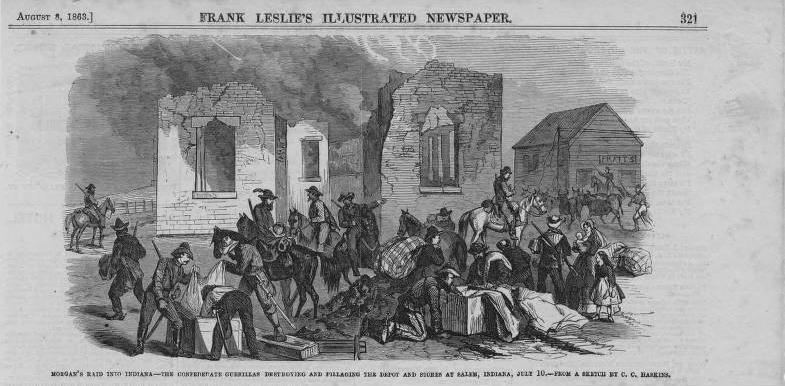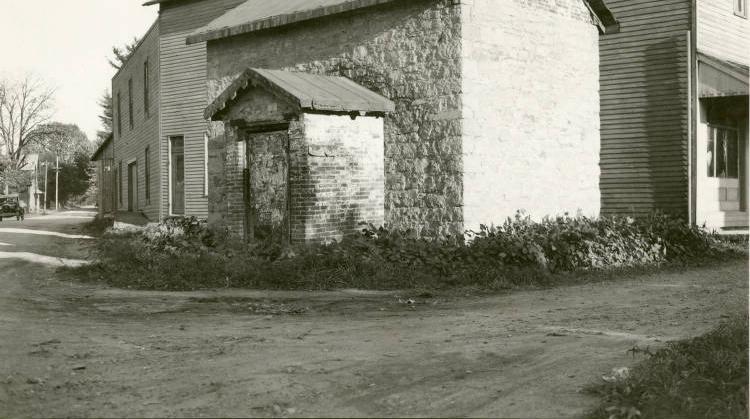During the , a division of Confederate cavalry under Gen. John Hunt Morgan invaded Indiana and rode north toward Indianapolis. Harried by federal troops and state , known as the Indiana Legion, the rebel force turned east into Ohio before reaching the city. Indianapolis was a vast armed camp during the raid scare.

On July 8, 1863, Morgan and about 2,500 Confederate cavalrymen captured steamboats and crossed the Ohio River, reaching Indiana in Harrison County. He and his men swept aside a force of Indiana Legion in a battle near Corydon. In the following days, while skirmishing with local Legion troops, they moved north, stealing horses, destroying railroad tracks, and looting communities. Morgan’s presence in Indiana sent shock waves throughout the North.
Governor , resisted the request from Maj. Gen. Ambrose E. Burnside to declare martial law throughout the state. Instead, he called out the Indiana Legion and asked loyal citizens to enroll in their counties as minutemen to fight the invaders. An estimated 40,000 men quickly flocked to Indianapolis to organize into volunteer units to repel Morgan’s force.

The of July 13 reported that the yard was thronged with companies reporting from different parts of the state, as were the Governor’s Circle () and the Soldiers’ Home. Units bivouacked in the several army camps around the city. The sound of fifes and drums was incessant as troops marched and drilled in the streets. In one day, the Soldiers’ Home, one of those installations, fed 12,000 to 15,000 men.
Amid the uproar, military commanders organized and officered regiments and brigades rapidly, armed them, and dispatched them on trains to points in southern Indiana and Ohio. The accidental explosion of an artillery caisson in the streets two blocks north of the State House killed several soldiers and passers-by.
Was Indianapolis Morgan’s objective? Historians do not have a clear picture of the raider’s plans. Certainly, the 5,000 Confederate prisoners held at and the city’s vast quantities of military supplies were inviting. Unconfirmed telegraphic reports filtering into the capital placed his strength at 5,000 to 10,000, stated that Camp Morton was his objective, and claimed that Nathan Bedford Forrest had followed Morgan across the Ohio River with another Confederate division.
Rumors circulated that city bankers had sent their coffers to Chicago. Historians now know that Morgan’s telegraphic operator tapped telegraph lines and sent false messages misrepresenting Confederate movements, strength, and destinations to confuse and misdirect Union forces.
Harried by pursuing Union cavalry and local resistance, Morgan and his force turned east at Salem, probably because of his desire to stay near the Ohio River to be able to escape into Kentucky. He left the state at Harrison on July 13 and entered Ohio, skirting Cincinnati. After several days of hard riding and skirmishing across Ohio, the Confederates attempted to recross the Ohio River, but Morgan and many of his exhausted troopers were forced back by federal gunboats. He surrendered to pursuers in northeastern Ohio on July 26.

Help improve this entry
Contribute information, offer corrections, suggest images.
You can also recommend new entries related to this topic.




